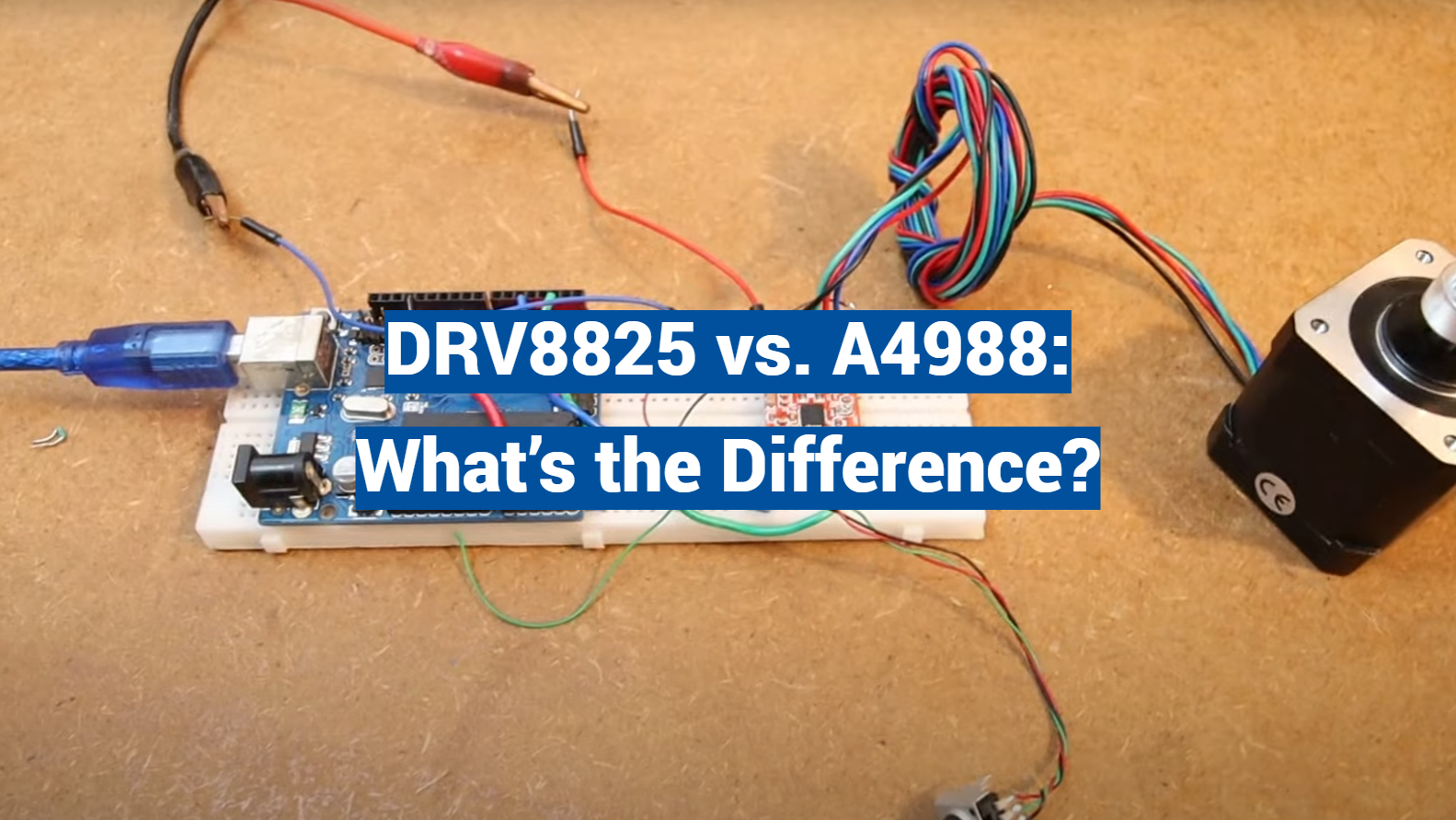Are you ready to dive into the captivating world of stepper drivers? If you’ve ever tinkered with electronics or dabbled in the field of robotics, then you’ve probably encountered the DRV8825 and A4988 stepper drivers. These two mighty components are the brains behind precise motor control, allowing your creations to move with precision and grace. But what sets them apart? This blog post will explore the differences between the DRV8825 and A4988 stepper drivers, providing you with the knowledge you need to choose the right one for your next project. So, strap in and get ready for a wild ride through the world of electronics!
What are stepper drivers for?
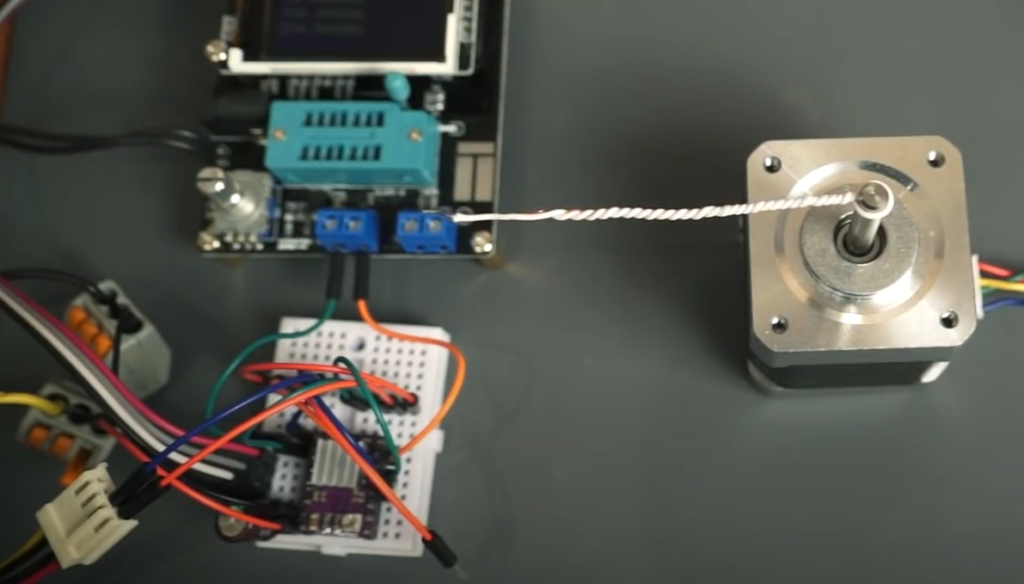
Stepper drivers are available in a variety of sizes and power ratings, so it’s important to choose one that is suited to your specific application. Additionally, some stepper drivers offer features such as current limiting, microstepping and stall detection which can help simplify the setup and improve the performance of the motor.
In addition to controlling stepper motors, stepper drivers can also be used with servo motors. Servo motors are similar to stepper motors, but they differ in that they provide precise control over the angle of rotation as opposed to steps. By using a stepper driver with a servo motor, you can achieve finer control and precision than is possible with a stepper motor. This makes them ideal for applications such as robotics, automation and 3D printing.
Another benefit of using a stepper driver is that they are generally easy to configure and operate. They can be connected directly to the motor or used in combination with an Arduino or other microcontroller-based system. This makes them great for DIY projects and hobbyists looking to get started with robotics and automation.
Overall, stepper drivers are an essential component for any project involving stepper or servo motors. They provide precise control over the motor speed and position, as well as other features such as current limiting and microstepping. This makes them ideal for applications such as robotics, 3D printing, scanning and more. Plus, they are easy to configure and operate, making them suitable for beginners and hobbyists alike [1].
Overview of A4988 stepper drivers
The A4988 stepper motor driver is a complete microstepping motor driver with a built-in converter, easy to use and cost-effective for many medium- or high-power motor applications. It can operate bipolar stepper motors in full–, half-, quarter-, eight– and sixteenth-step modes, operating at up to 40V and 2A output current. The A4988 includes a fixed off-time current regulator, typically designed to do micro stepping with a minimum step size of 5°.
The A4988 is also equipped with several protection features that can help prevent damage to the driver or stepper motor:
- Over-temperature thermal shutdown circuitry
- Short circuit and under voltage protection
- Internal logic supply voltage regulator
- Over-current and over-voltage protection
The A4988 driver is capable of delivering up to 1.5A per phase without a heat sink or forced air flow (up to 2A with sufficient additional cooling). It can be easily interfaced with both microcontrollers and TTL control systems. The adjustable current control lets you set the maximum current output with a potentiometer, which lets you use a wide range of stepper motors. Additionally, the A4988 has a built-in overcurrent and overtemperature protection that can help prevent damage to the driver or motor in case of fault conditions.
The A4988 is a great choice for applications ranging from 3D printing to CNC milling. It is also a great option for robotics applications due to its simple interface and cost-effectiveness. With the A4988, you can build powerful motor control systems quickly and easily without sacrificing performance or reliability.
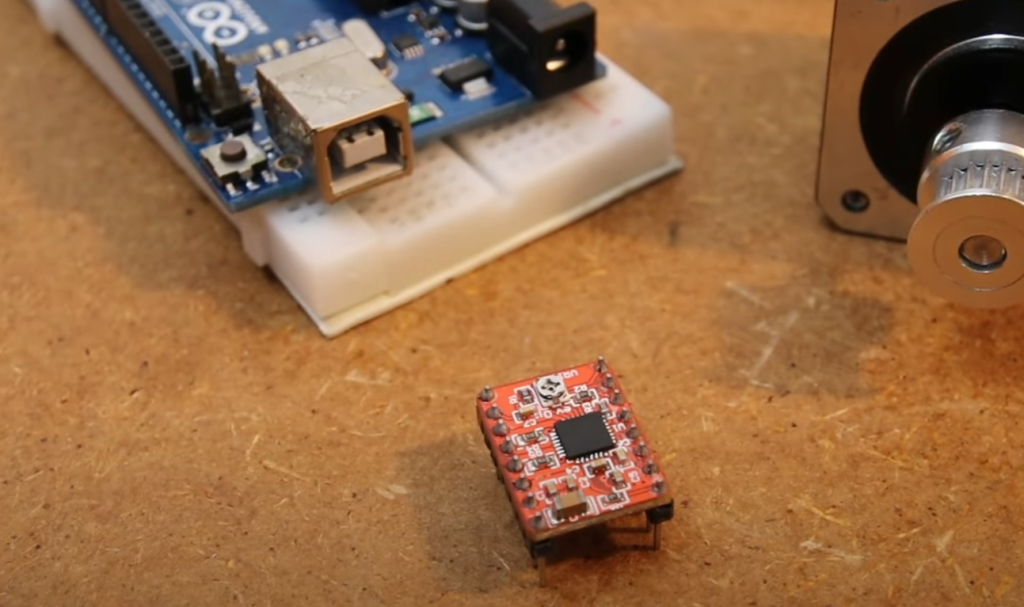
Overview of DRV8825 stepper drivers
The DRV8825 stepper motor driver is a high-performance, cost-efficient motor driver IC for full-step and micro-stepping applications. It has two configurable current control modes that can deliver up to 1.2A per coil without additional external components required. The integrated MOSFETs are capable of handling voltage up to 45V while the anti-resonance technology and variable microstep resolution provide smoother movement at higher speeds. The DRV8825 also offers a wide range of protection features including over-voltage, under-voltage, short circuit, overheating, and overcurrent protection. Furthermore, it has several control pins that allow for easy integration into microcontroller-based systems.
The DRV8825 is suitable for a variety of applications such as 3D printers, CNC machines, and robotics. It can be used to drive both 2-phase and 4-phase stepper motors with 1/16 micro stepping capability for smoother motion. With its easy configuration, high current rating, and safety features, the DRV8825 motor driver is an excellent choice for your next project.
Benefits of DRV8825 Stepper Drivers
The DRV8825 stepper motor driver stands out among other motion control solutions on the market due to its wide range of benefits. Firstly, it offers convenience by requiring no additional external components for operation. With its built-in current control modes, configuration becomes a breeze.
Secondly, the integrated MOSFETs possess a remarkable capability of handling up to 45V, resulting in higher torque and faster speeds. This opens up possibilities for more demanding applications. Moreover, the anti-resonance technology incorporated in the DRV8825 helps to effectively reduce noise and vibrations, making it an ideal choice for applications where such factors are critical. With these advanced features, the DRV8825 truly offers a comprehensive and versatile solution for precise motion control requirements.
Finally, the DRV8825 includes various protection features such as over-voltage, under-voltage, short circuit, overheating, and overcurrent protection to safeguard against unexpected events. These features make the DRV8825 an ideal choice for motion control projects that require reliable performance and robust safety features.
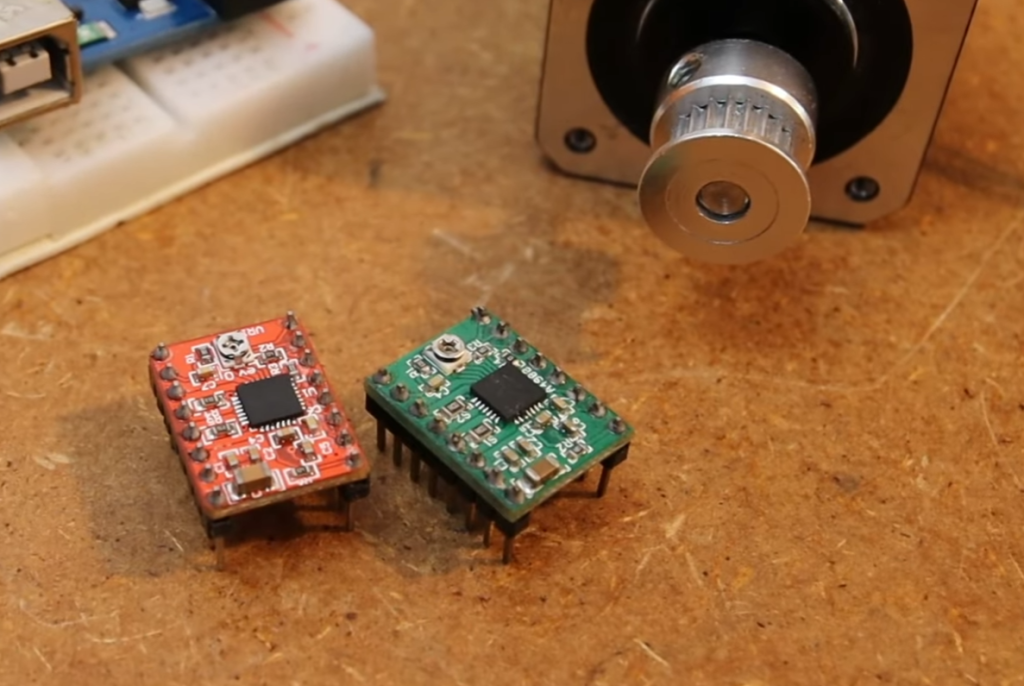
A4988 VS DRV8825
Features
The A4988 and DRV8825 drivers have several features that set them apart. The A4988 has two-step modes: full-step and half-step, while the DRV8825 has three-step modes: full-step, half-step, and micro stepping. The A4988 also features adjustable current limiting, which helps to protect motors from drawing too much current. The DRV8825 also has adjustable current limiting, but it has a higher maximum value and better protection features.
The A4988 has an operating voltage of 8 V to 35 V, while the DRV8825 can handle up to 45 V. The A4988 also features a “sleep” mode that reduces power consumption significantly when not in use. The DRV8825 has a “standby” mode that can be used to reduce the current draw even further, but this comes with the cost of having to disable it manually.
The A4988 and DRV8825 drivers both have internal over-temperature protection, allowing them to shut down automatically in the event of a temperature spike. However, the DRV8825 has an external over-temperature protection feature that allows it to shut down before the internal temperature gets too high.
Both drivers also have their own advantages and disadvantages when it comes to performance. The A4988 has better acceleration and deceleration capabilities than the DRV8825 but is not as precise when it comes to speed control. The DRV8825 has better speed control, but the acceleration and deceleration are not as good.
The A4988 and DRV8825 drivers both offer excellent performance, reliability, and cost-effectiveness for stepper motor drives. Depending on your needs, either driver can be a great choice.
Schematic Diagrams
When it comes to wiring up a stepper motor driver, the A4988 and DRV8825 both have different schematic diagrams. The A4988 has four pins (VMOT, GND, VMIN, and VDD) while the DRV8825 has six (VMOT, GND1/GND2, VMIN, VCC1/VCC2, and DIR).
The A4988 diagram requires connecting a power supply to the VMOT pin, while the DRV8825 schematic requires two separate power supplies to both VCC1 and VCC2 pins. The A4988 diagram also has an optional connection for the optional voltage regulator which helps to reduce noise and improve efficiency.
The A4988 and DRV8825 diagrams both show the correct wiring of all components needed for driving a stepper motor. However, the DRV8825 diagram has additional information regarding jumpers and switches that are necessary to enable certain functions such as microstepping and over-temperature protection. It is important to read and understand these diagrams before attempting to wire up a motor driver.
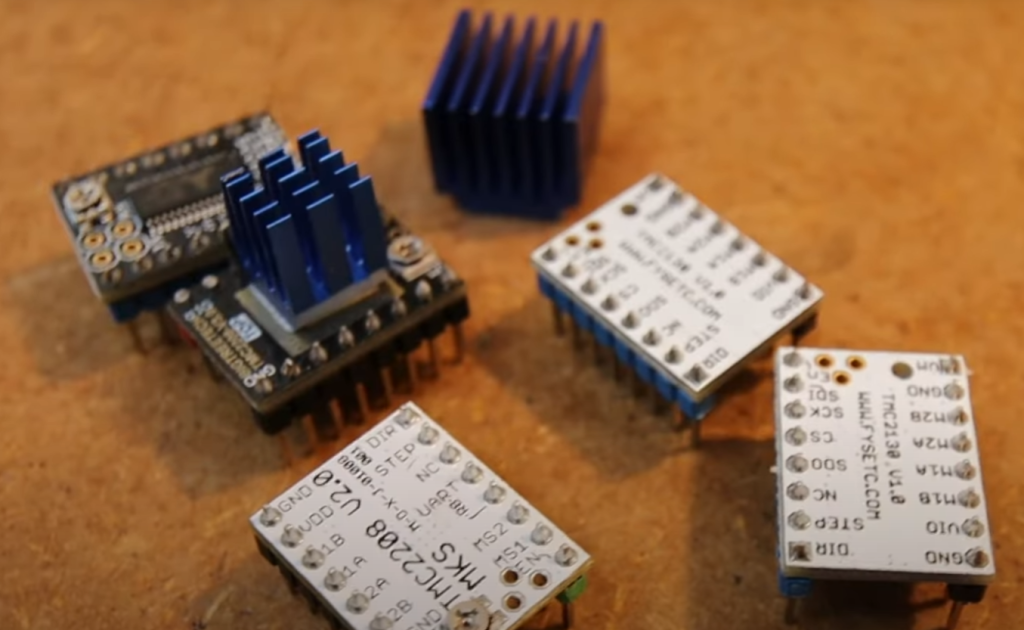
Control inputs
The A4988 and DRV8825 drivers both have the same control inputs. These include two digital inputs (DIR and STEP) for controlling the direction and step size of a stepper motor, an enable input that is used to turn off the driver when not in use, and a logic low “sleep” mode which reduces power consumption. The DRV8825 also has an additional input called “MS1” that can be used to adjust the microstepping resolution.
Both drivers require a power supply of at least 8V for operation, although the DRV8825 needs two separate supplies for its VCC1 and VCC2 pins. The A4988 requires only one power supply but it does require additional connections for the optional voltage regulator.
Using the driver
Using a stepper motor driver is relatively straightforward. The A4988 and DRV8825 both have the same basic setup, with the DIR and STEP inputs used to control the direction and step size of the stepper motor.
To use either driver, first connect the power supply to its VMOT pin or VCC1/VCC2 pins (for the DRV8825). Then connect the DIR and STEP pins to a controller such as an Arduino or Raspberry Pi. Finally, enable the driver using its “EN” pin and set its microstepping resolution (if applicable) by connecting the MS1 pin to ground or VCC (depending on your desired setting).
Once everything is connected, the driver is ready to be used. You can now use your controller to send signals to the DIR and STEP pins in order to control the stepper motor’s direction and speed.
Applications
Stepper motor drivers are used in a variety of applications, from robotics and CNC machines to 3D printers and factory automation. The A4988 and DRV8825 drivers both offer excellent performance for these types of projects, so it is important to consider your specific application before deciding which driver to use.
The A4988 driver is best suited for applications that require quick acceleration and deceleration, while the DRV8825 offers better speed control and higher maximum voltage. The A4988 is also more cost-effective than the DRV8825, but it lacks some of the features such as external over-temperature protection.
No matter which driver you choose, both are great options for driving stepper motors in a variety of applications. They both offer reliable performance, cost-effectiveness, and excellent features that make them a great choice for any project [2].
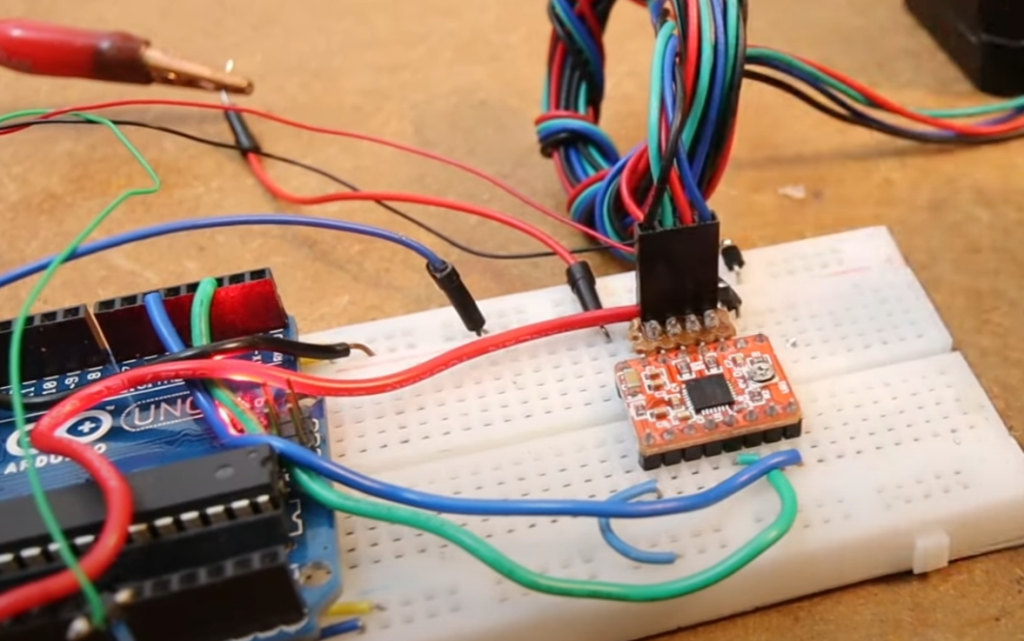
How to use stepper drivers?
Once the stepper driver is connected to the system, you’ll need to select a drive mode for the stepper motor. The most common modes are full step, half step and micro-step operation. Each of these modes affects the speed and accuracy of the motor. You will also need to choose the current limit for your stepper driver, as this is key to ensuring that the motor does not exceed its rated torque.
Finally, you’ll need to configure the step pulse width and acceleration/deceleration settings. These two parameters are important for maintaining accurate positioning throughout a motion sequence. Once all of these settings are properly configured, the stepper driver can be used to control the motion of the motor.
Stepper drivers are an essential component in any system that requires precise positioning. With their simple setup and intuitive configurations, they make it easy to accurately position motors for a variety of applications. Furthermore, they enable users to quickly adjust current limits and pulse widths to fine-tune the speed and accuracy of their motion sequences. Thus, they are an invaluable tool for anyone looking to control the motion of a stepper motor.
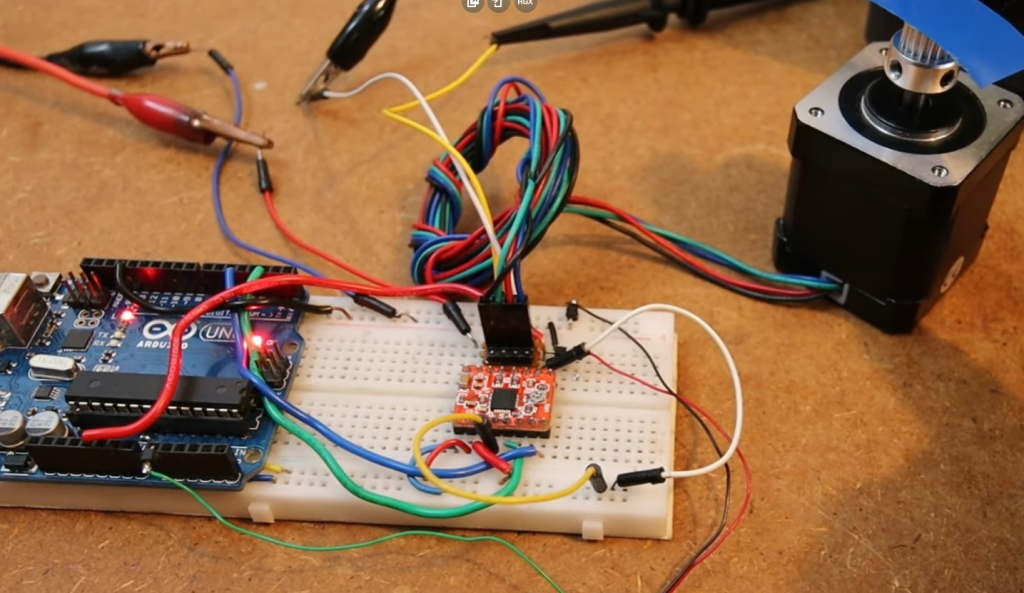
FAQ
What are the main differences between A4988 and DRV8825?
The main differences between the A4988 and DRV8825 are the following:
- The DRV8825 offers higher step resolution, up to 1/32 microstepping compared to 1/16 for the A4988. This means that the motor will run smoother at lower speeds.
- The DRV8825 has a lower operating voltage range, from 8.2V to 45V compared to the A4988’s operating voltage range from 8V to 35V.
- The DRV8825 contains a thermal protection system that will reduce current in order to prevent the driver and motor from overheating. This feature is not available on the A4988.
- The DRV8825 has an adjustable reference voltage for the output current regulation which allows for greater control of the motor.
- The DRV8825 also offers a higher maximum output current at 2.5A compared to 1.2A for the A4988.
Overall, the DRV8825 is slightly more expensive than the A4988 but offers far more features which make it suitable for high-precision applications.
What is the difference between microstepping and full stepping?
Microstepping, also called fractional stepping or subdivided motion, is a technique used to achieve greater precision in motor control systems by allowing the motor to move in smaller increments than its full step size. This results in smoother motion and higher resolution. Full stepping is the most basic form of motor control where the motor moves at its maximum resolution, or full step size. This means that for every pulse sent to the motor it will move a certain number of steps determined by its step size. By using microstepping, smaller increments can be achieved leading to smoother motion and better accuracy.
Are DRV8825 and A4988 interchangeable?
No, the A4988 and DRV8825 are not interchangeable. While both are motor drivers, they possess distinct characteristics and features that cater to different applications. For instance, the DRV8825 boasts a higher step resolution and a thermal protection system, which the A4988 lacks. Therefore, it is crucial to thoroughly evaluate the specific features of each driver before making a decision on the motor control system that best suits your needs. This consideration ensures optimal performance and functionality for your application.
What is the equivalent of DRV8825?
The equivalent of the DRV8825 is the A4988, which is a similar stepper motor driver. The main differences between these two drivers are that the DRV8825 offers higher step resolution and a thermal protection system as well as an adjustable reference voltage for output current regulation. If you need high-precision control over your motor then the DRV8825 is the better choice. However, if you don’t need these features then the A4988 could be a more suitable option. Both drivers are suitable for small to medium-sized stepper motors.
What voltage do I need for my DRV8825?
The DRV8825 operates at a supply voltage between 8.2V and 45V, ensuring optimal performance for a wide range of motors. It is crucial to carefully select a power supply that can precisely provide the required voltage for your specific motor, as using incorrect voltages could potentially lead to damage or even complete destruction of the motor. Additionally, when considering the power source, it is important to take into account any other components within the system that may have their own power requirements. To ensure compatibility and seamless operation, it is highly recommended to use the same power source for both the DRV8825 and the motor itself, minimizing the risk of any potential incompatibilities and ensuring a smooth and reliable operation.
Which type of motors can be controlled with DRV8825?
The DRV8825 is a versatile motor driver that is specifically designed for controlling small to medium-sized stepper motors. It is compatible with both unipolar and bipolar stepper motors, including four-wire, eight-wire, and sixteen-wire configurations. With its reliable and efficient performance, the DRV8825 is perfect for various applications that require precise motor control.
However, it’s important to note that the DRV8825 may not be suitable for controlling larger or more powerful types of motors. If you are working with a motor that requires higher current or torque, it is recommended to consider using an alternative driver such as the A5900. By opting for the appropriate driver, you can ensure optimal performance and reliability in your motor control system.
What do I need to get started with DRV8825?
In order to get started with the DRV8825, you will need a power supply, a stepper motor, and some additional components such as a Raspberry Pi, an Arduino board, or a motor control shield. You will also need some basic tools such as a soldering iron and some spare wires to connect the components. Once you have all of your components ready, you can begin wiring them up and programming your motor control system.
What is the maximum output current of DRV8825?
The DRV8825 has a maximum output current of 2.5A, which is higher than the 1.2A offered by the A4988 making it suitable for powering larger or more powerful stepper motors. It is important to note that the actual output current will depend on factors such as the voltage and temperature of the motor. You should always check your motor’s specifications before powering it with the DRV8825.
Conclusion Paragraph
In conclusion, DRV8825 and A4988 stepper drivers are both viable options for motor control in a wide range of applications. The DRV8825 offers greater current capacity and higher resolution micro-stepping, but is slightly more expensive than the A4988. The A4988 has less current capacity and fewer levels of micro-stepping, but is more affordable. Both stepper drivers are relatively easy to use and can be configured to suit your particular application. Ultimately, the decision on which stepper driver to use should be based on the specific requirements of your project. With careful consideration and a bit of research, you can find the right stepper driver for you.
Useful Video: Stepper Drivers A4988 vs TMC SILENT drivers – Sound & Signals
References:
- https://www.globalspec.com/learnmore/motion_controls/controls_drives/stepper_motor_drives
- https://www.utmel.com/components/a4988-vs-drv8825-what-are-the-differences-between-them?id=2003

